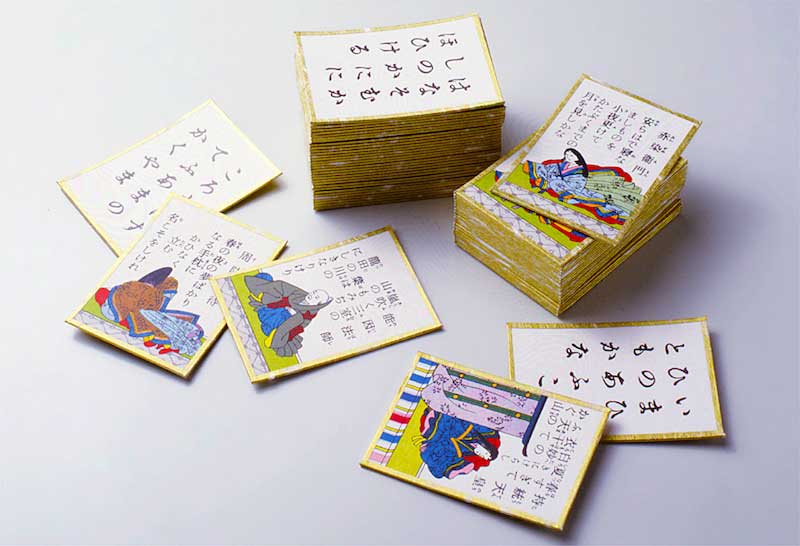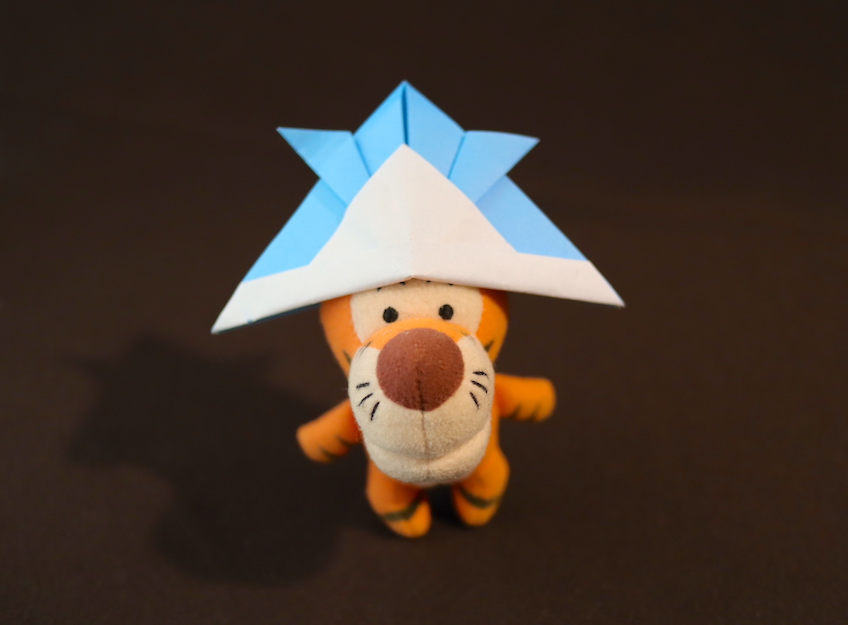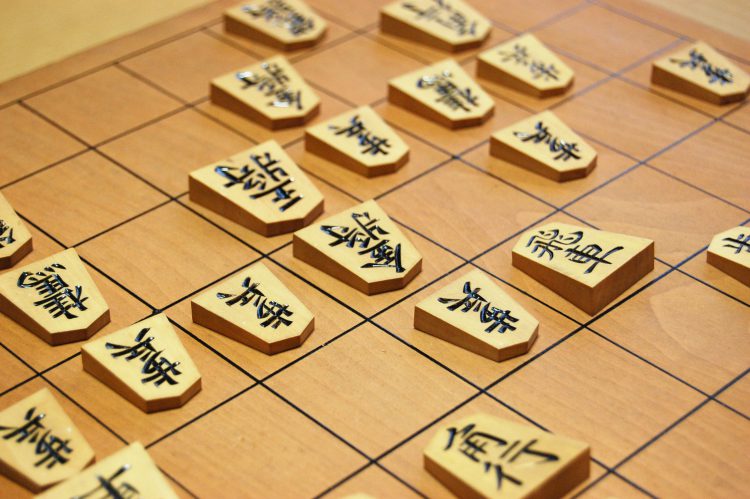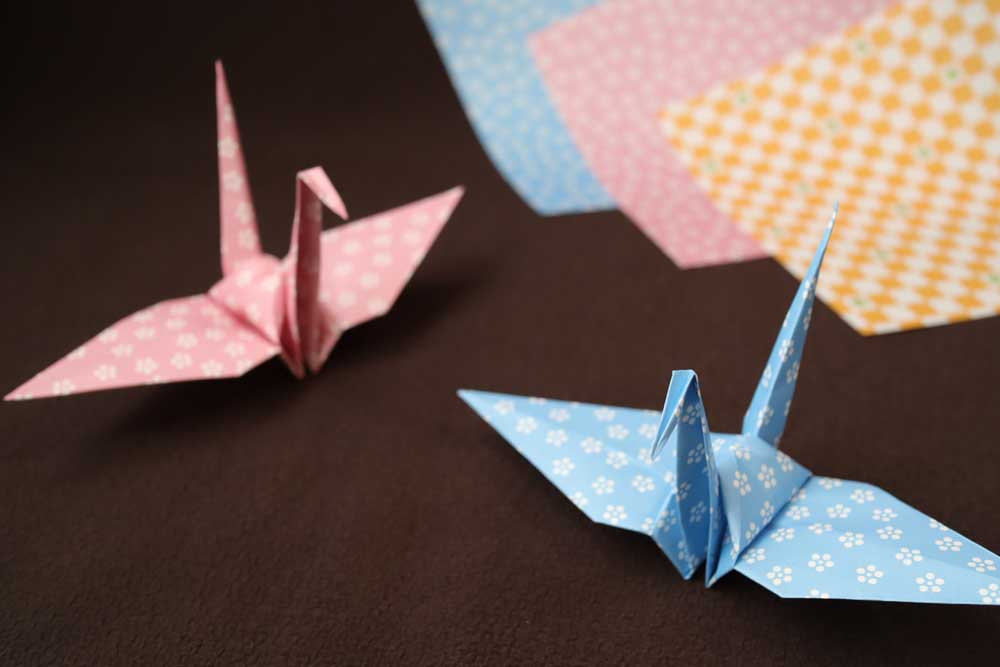
紙を折ることでさまざまな形や物をつくる日本の伝統芸術、折り紙。
日本人のほとんどが小さい頃に折り紙で遊んだことがあるかと思いますが、大人になるとあまり折り紙に触れる機会がなくなってしまったという方もいらっしゃることでしょう。
最近海外では、「思考力を養うゲーム」として Origami に親しむ人が増えてきているようです。
折り紙は数学的そして工学的な性質を持ち、遊びの枠を超えてさまざまな分野に利用されています。
今回は、折り紙の歴史や鶴の折り方などを英語で説明する表現をご紹介していきます。
ご興味のある方は、当サイトで 英語クイズ(5000問) を出題しておりますので是非ご覧ください。
目次
折り紙の簡単な説明
Origami is a traditional Japanese art of paper folding.
(折り紙は紙を折りたたむ日本の伝統的な芸術です。)
We make various objects without cutting or pasting.
(紙を切り貼りすることなく、様々なかたちを作ります。)
One produces shapes resembling various things by folding pieces of square paper.
(四角い紙を折って色々な物に似たかたちをつくります。)
Its name derives from the Japanese words “ori” (folding) and “kami” (paper).
(その名前は日本語の「折ること」と「紙」に由来します。)
Origami, from ori, meaning “folding” and kami meaning “paper,” is an amusement in which paper is folded into many different shapes, such as cranes, samurai helmets, ships and more.
(「折る」の ori、「紙」の kami を意味する折り紙は、紙を折りたたんで鶴や兜、船など様々なかたちをつくる遊びです。)
In Origami, a single piece of thin paper is folded into a target shape without using scissors, or paste/glue.
(折り紙では、ハサミや糊を使わずに一枚の薄い紙を折ることで目標のかたちに仕上げます。)
In particular, the crane is widely known as the masterpiece of origami.
(特に、鶴は折り紙の傑作として広く知られています。)
Origami is also used as an educational tool since the folding process involves geometric concepts.
(紙を折る過程は幾何学的な概念を伴うため、折り紙は教材としても使用されています。)
Some say that the Japanese are relatively skillful with their fingers because they learned origami as children.
(日本人が比較的手先が器用なのは、子供の頃に折り紙を習うからだ、と言う人もいます。)
Today, origami is popular worldwide.
(今日、折り紙は世界中で人気があります。)
折り紙の歴史
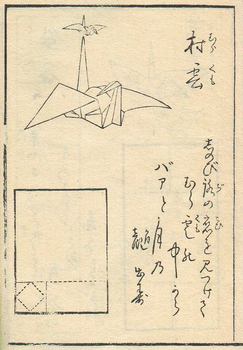
The exact origin of the art of origami is unknown.
(折り紙の正確な起源は明らかになっていません。)
The technology for making paper was introduced to Japan from China around the 6th century and had a distinctively Japanese development.
(紙をつくる技術は6世紀頃に中国から日本に伝わり、独自の発展を遂げました。)
Japanese people developed a way to make a type of thin, durable paper that became known as “washi.”
(日本人は、「和紙」として知られる薄くて耐久性のある紙の作り方を開発しました。)
The Japanese created high-quality paper by using the fiber of trees.
(日本人は木の繊維を使って上質な紙を作るようになりました。)
The culture of making paper has spread to various parts of Japan, and washi has been mass-produced since the latter half of the Heian period.
(製紙文化は日本各地に広まり、平安時代後期からは和紙が大量に生産されるようになりました。)
Washi came to be used in Shinto rituals as well, and it became customary to wrap offerings to the gods and other things in paper.
(和紙は神道の儀式でも使われるようになり、神々への供物などを紙で包むのが習慣になりました。)
Washi-making has developed along with traditional Japanese art, and the Japanese have been using “washi” to make fans, lanterns, and interior doors as well.
(紙漉きは日本の伝統芸術とともに発展し、日本人は和紙を用いて扇子、提灯、そして障子やふすまなどを作ってきました。)
It has qualities, such as durability, refinement, and a warm texture, not found in Western Paper.
(和紙には、丈夫さや上品さ、温もりのある質感など、西洋の紙にはない良さがあります。)
In the Edo period, origami came to be used as the authentication paper, and the Japanese term “origami-tsuki” (attached origami) means that something is guaranteed to have reliable quality.
(江戸時代には、折り紙が鑑定書として使われるようになり、「折り紙付き」は品質が保証されていることを意味しています。)
The first book documenting recreational origami, “Hiden Sembazuru Orikata” (Thousand Crane Folding), was published in 1797.
(1797年、折り紙をレクリエーション向けに記録した最初の本「秘伝千羽鶴折形」が出版されました。)
鶴の折り方 / Crane
1. Fold to make a triangle.
(角を合わせて半分に折ります。)
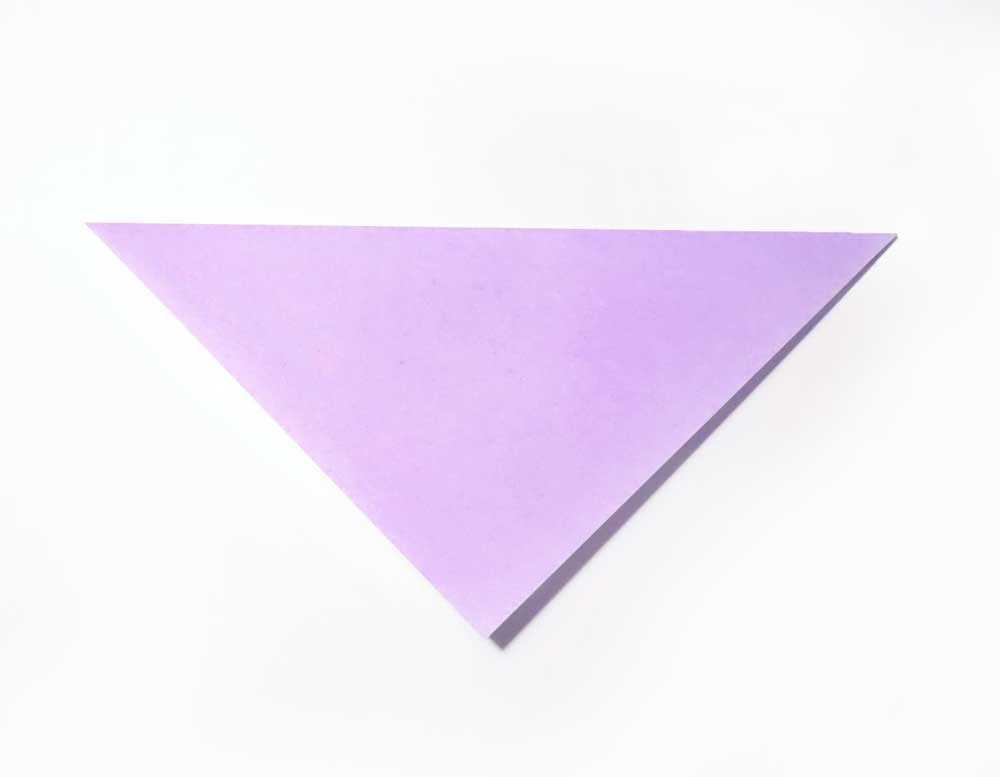
2. Fold in half again.
(さらに半分に折ります。)

3. Open the upper layer and flatten it to make a square.
(上の一枚を開き、四角いかたちに広げます。)

4. Repeat this process on the other side.
(反対側も同様にします。)

5. Fold the outer corners on both right and left sides, then open it up again.
(外側を左右それぞれ内側に折って折り目をつけ、もう一度開きます。)
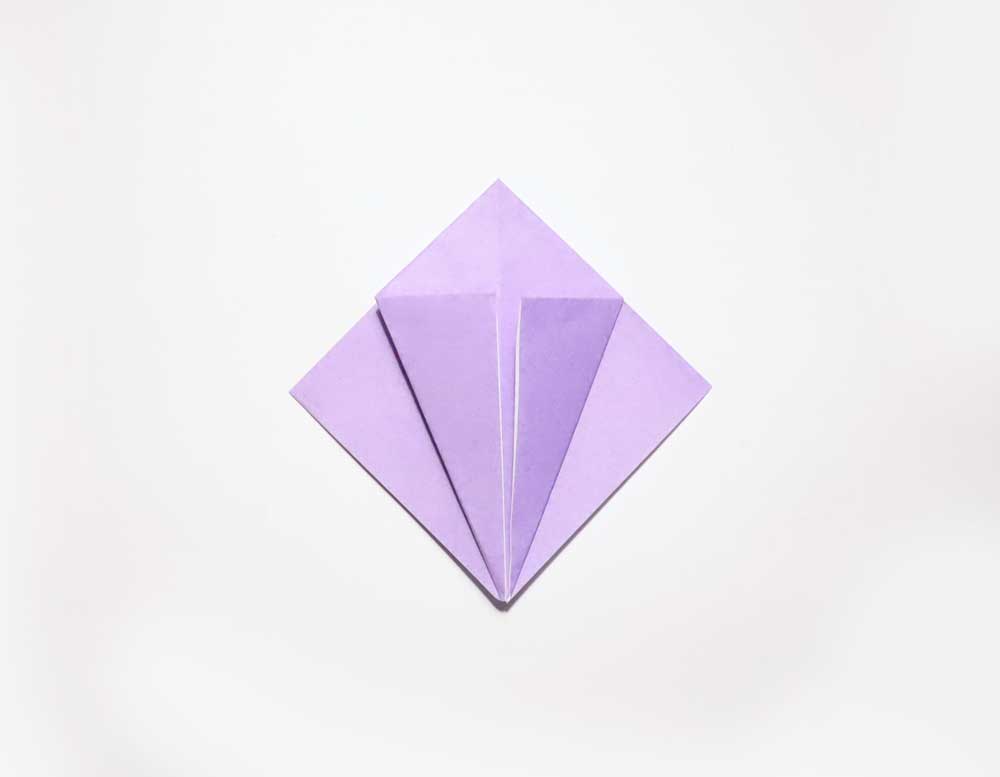
6. Repeat the process on the other side.
(反対側も同様にします。
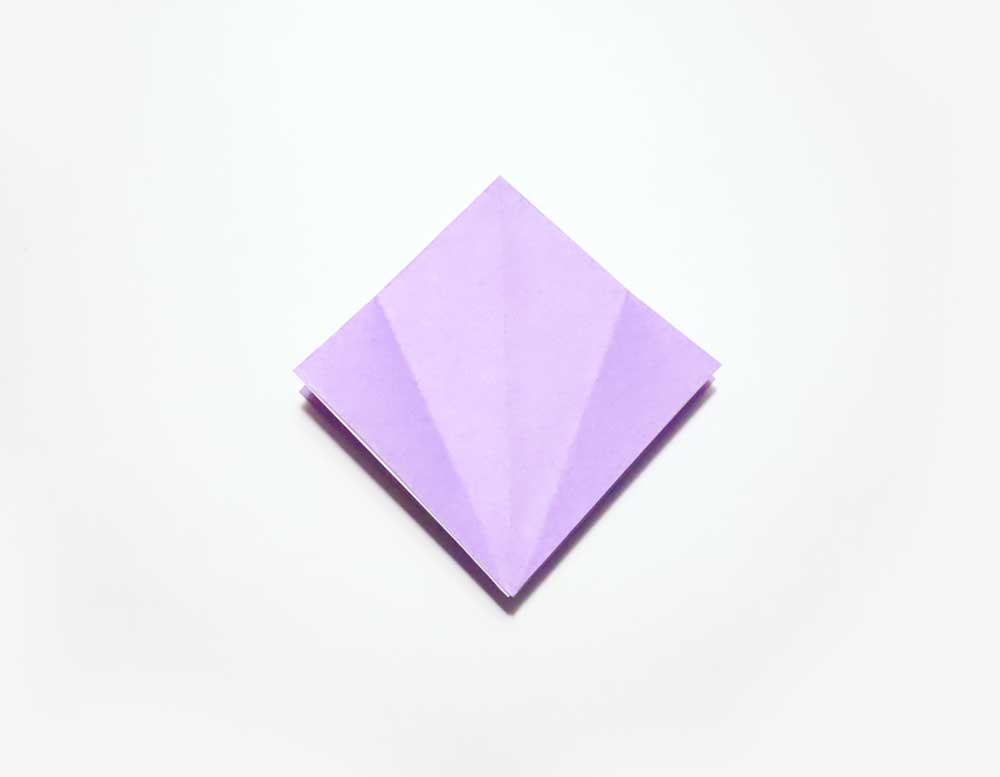
7. Fold along the dotted line.
(点線に沿って折ります。)
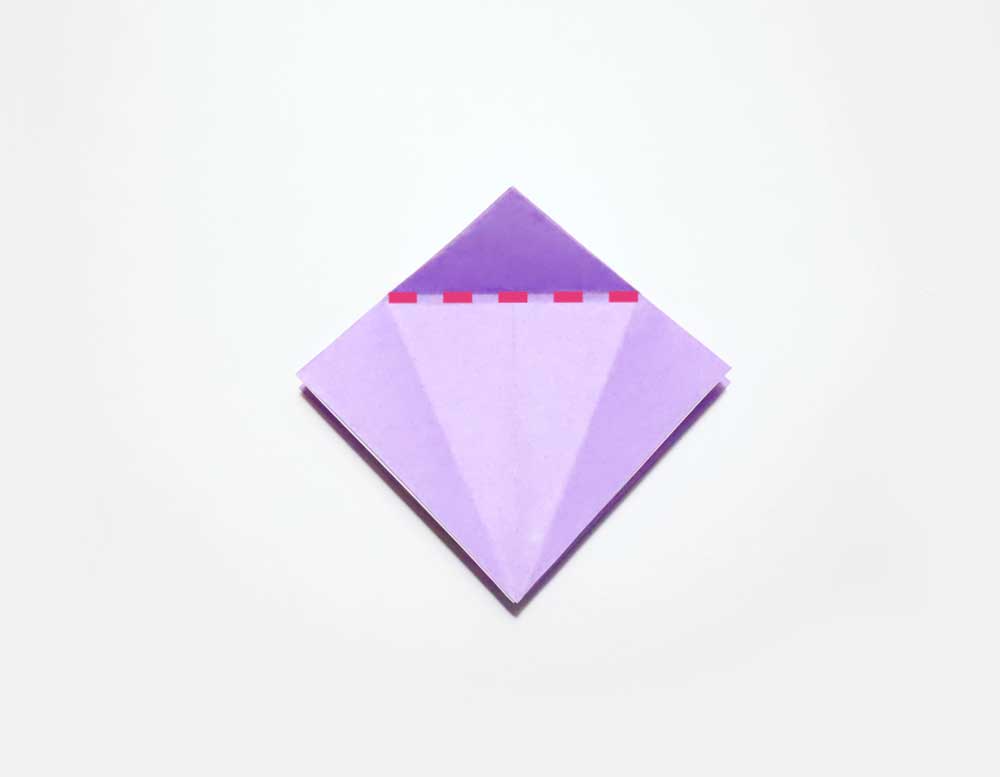
8. Open up the top layer to make a long diamond shape.
(上の一枚の紙の部分を、縦長のひし形になるように開きます。)
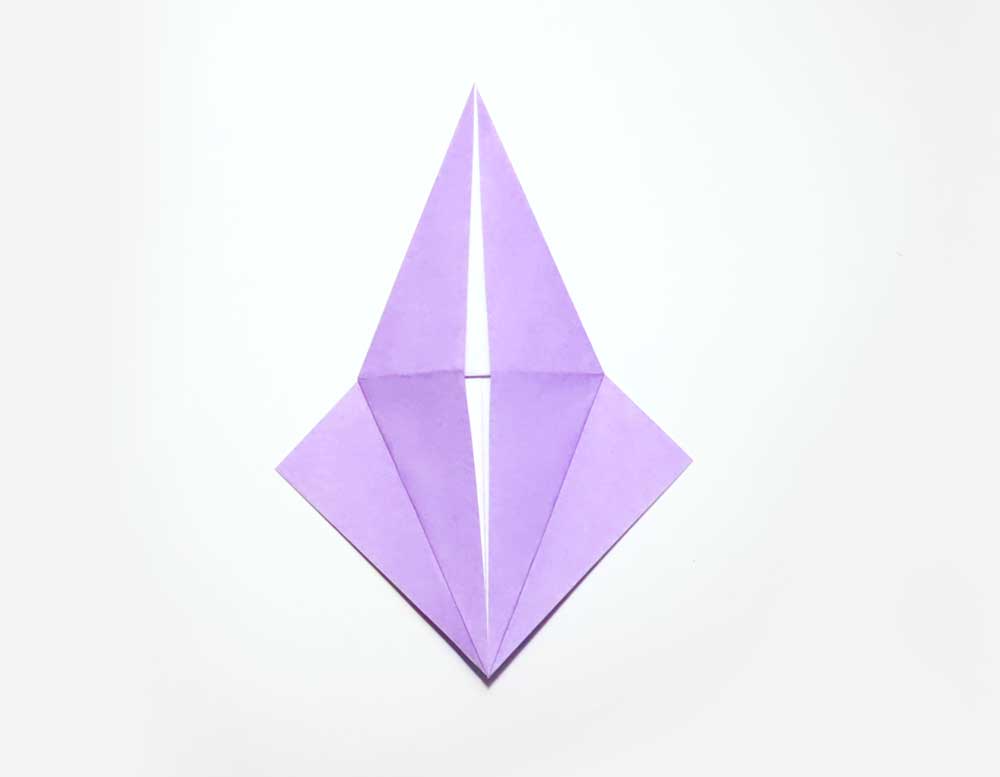
9. Repeat the process on the other side.
(反対側も同様にします。)
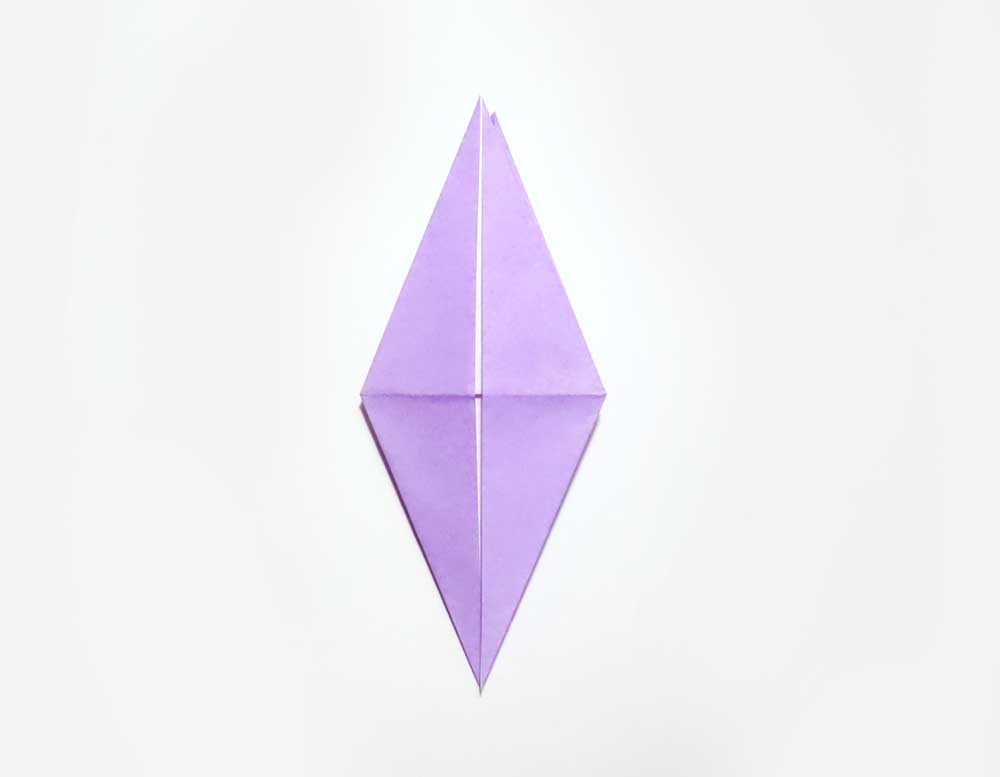
10. Fold the left and right sides in. Repeat the process on the other side.
(左右を内側に折ります。反対側も同様にします。)
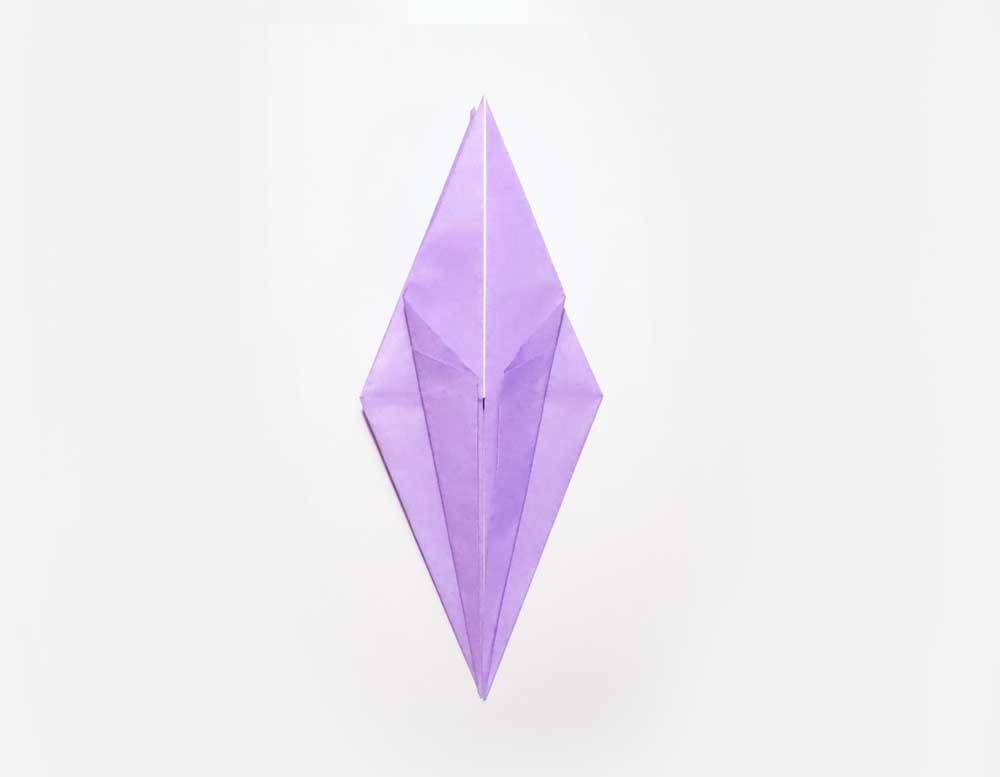
11. Fold the long part up toward the middle and Repeat the process on the other side.
(折った部分を内側にします。反対側も同様にします。)
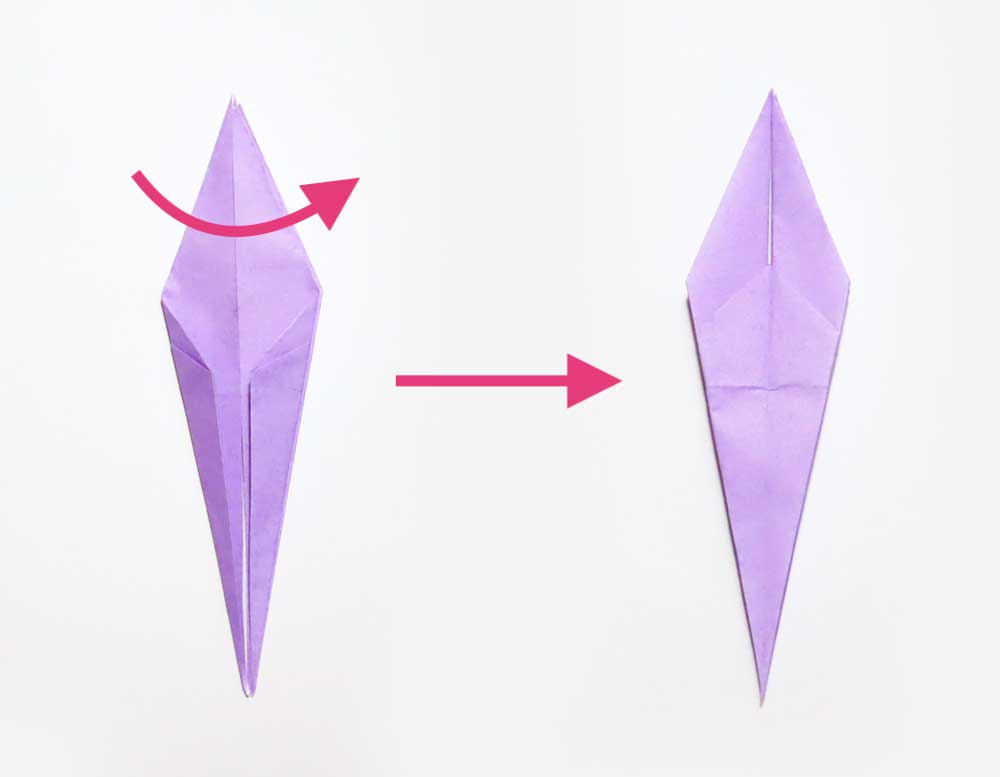
12. Fold the bottom part upward. Repeat the process on the other side.
(下のほうの端を上に折ります。反対側も同様にします。)
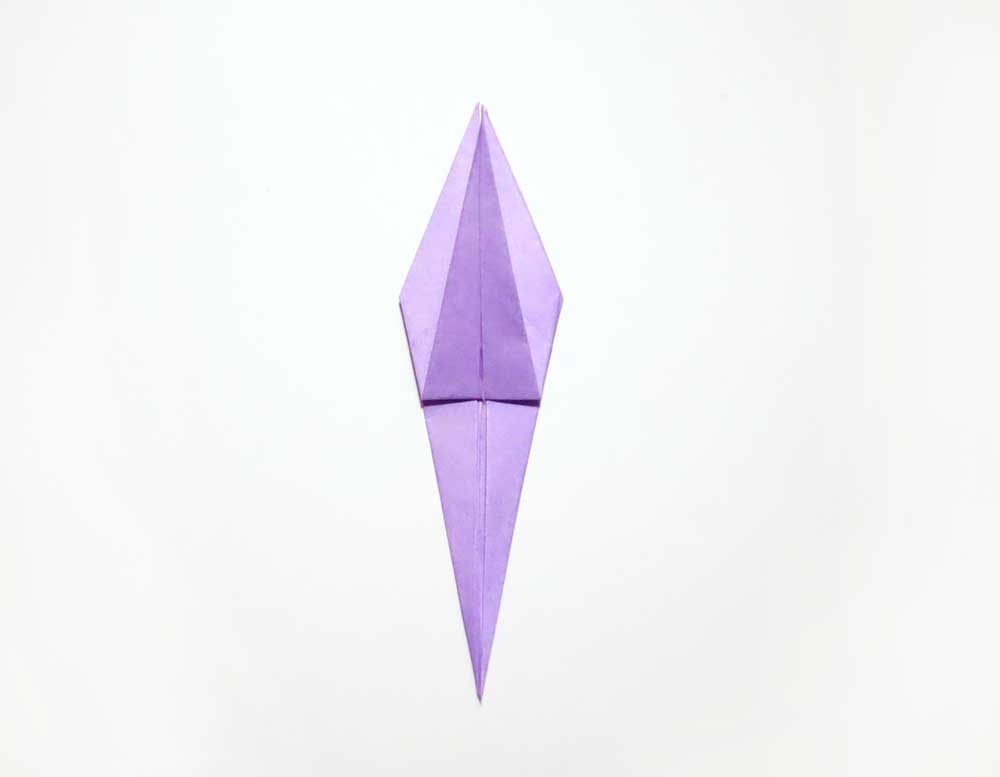
13. Move the folded part to the middle.
(折った部分を内側にします。)
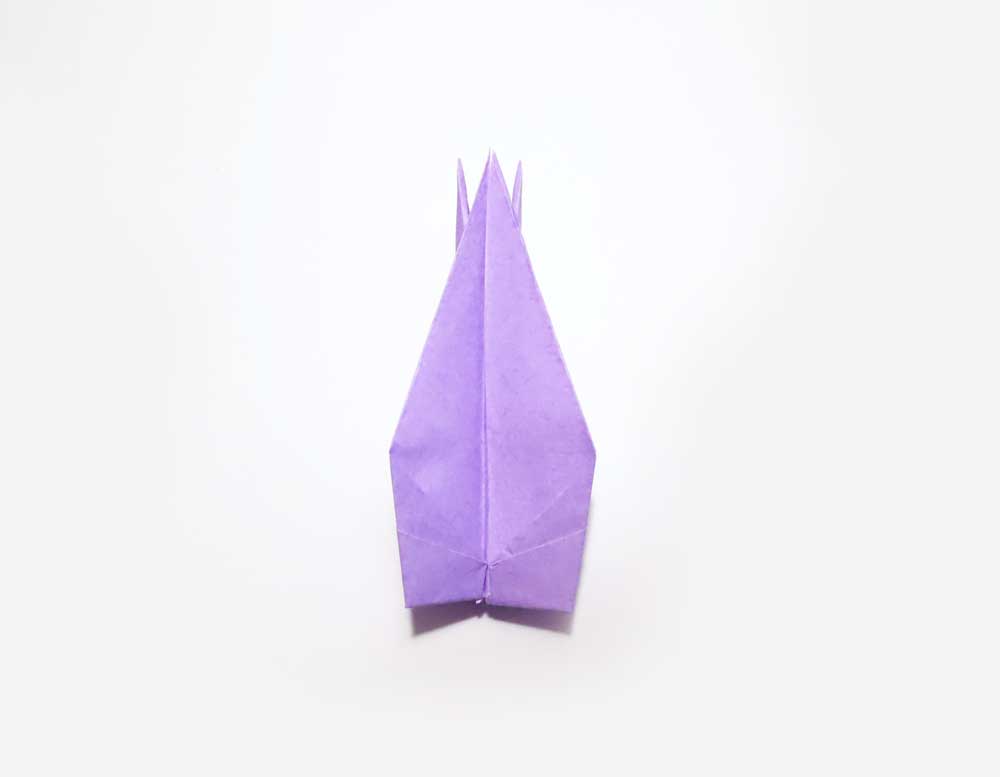
14. Fold down the tip of one side to make the face and fold down the wings.
(片方の端を折って顔をつくり、羽を広げます。)
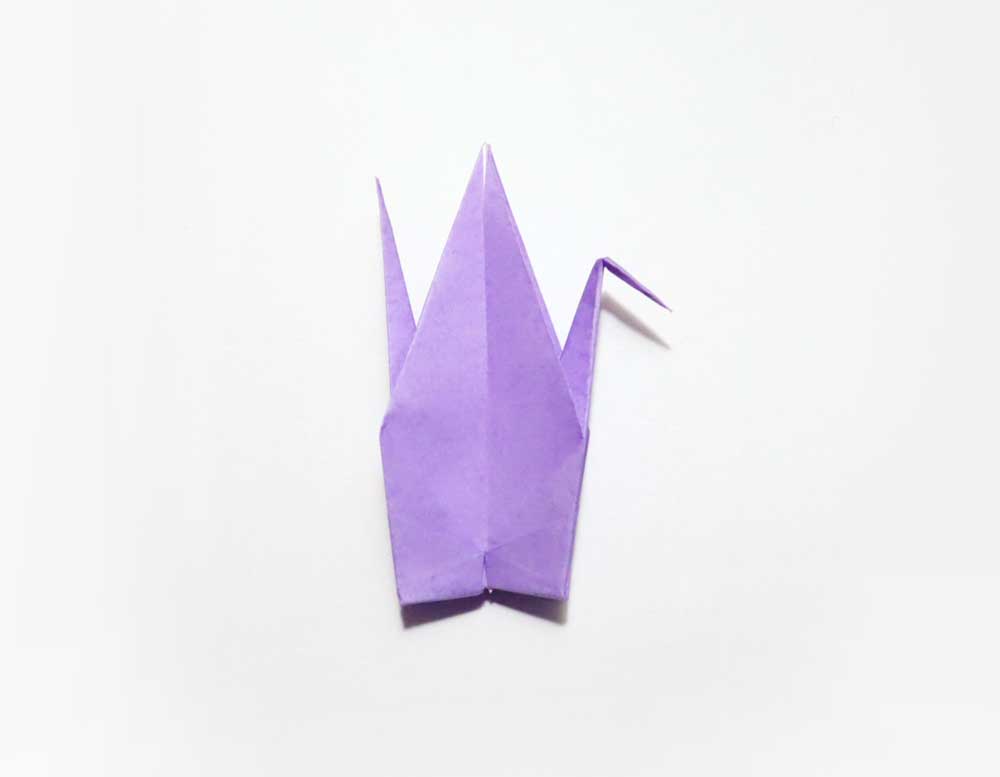
15. Blow air in gently from the hole in the underside to inflate the body.
(下の穴から軽く息を吹き込んで身体を膨らませます。)
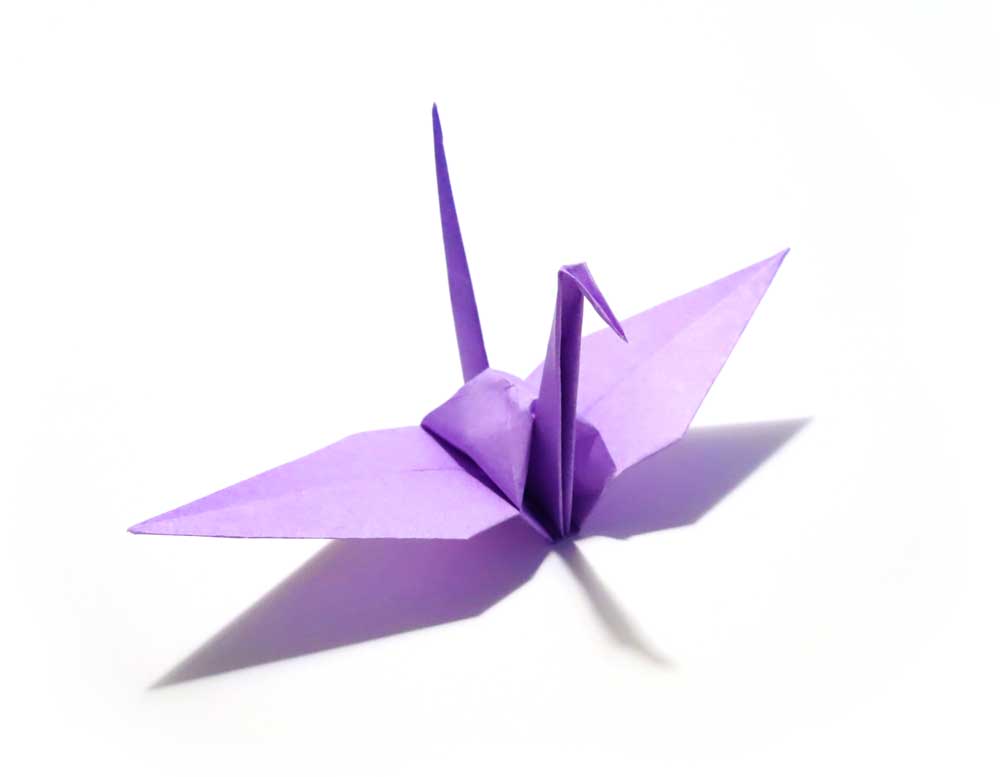
↓ 手裏剣の折り方はこちらに記載しています。
